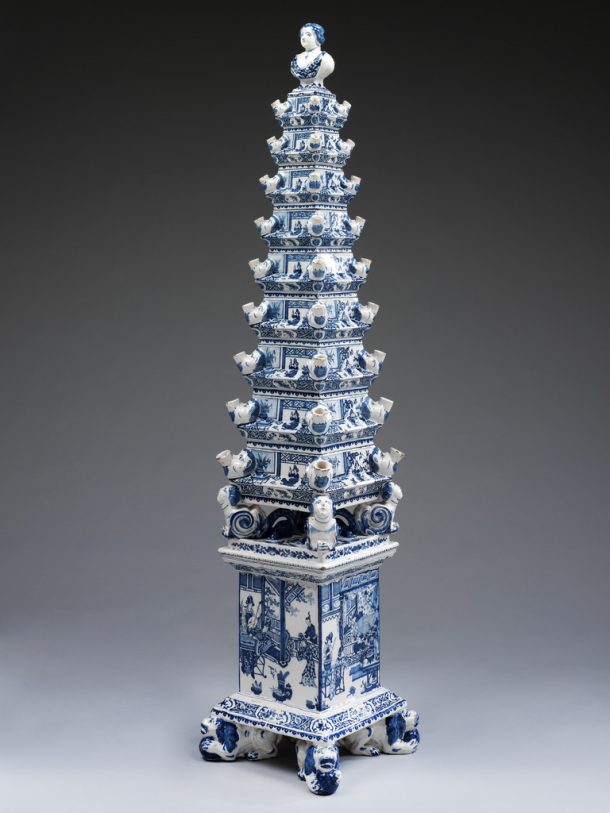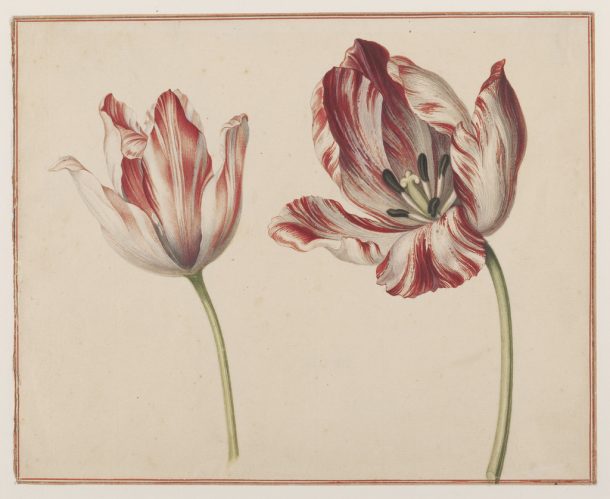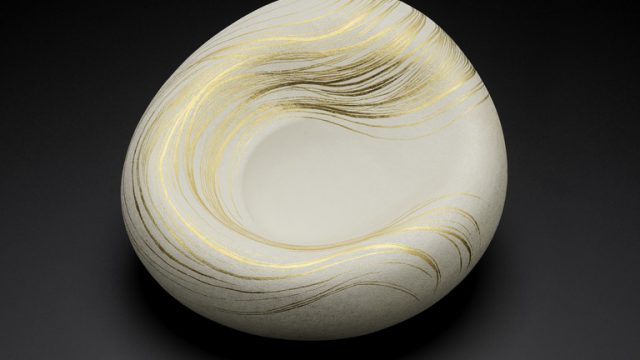This activity is adapted from the V&A The Curious Ceramic gallery backpack. The backpack was originally designed with multisensory artist Abigail Hirsch and with the help of families from SENSE. The backpack was designed specifically for children with visual impairments and SEND – but is enjoyed by all families. The Curious Ceramic backpack was supported by The Lord Leonard and Lady Estelle Wolfson Foundation.
Let’s go on a multisensory journey from China to the Netherlands with objects, textures, sounds and smells, and learn how the plates and mugs you use are made. We are going to use some household objects to do ‘Sensory Play’. This is where we try to use different senses (like smell, feel, and sound) to help us imagine our journey.
To go on this sensory journey, you will need to find some objects from your house. Make sure you ask before you borrow anything:
- A small ball of something squishy, for example clay, plasticine, salt dough or a ball of Blu Tack
- A ceramic from your house – such as a mug, a vase, a plate
- A piece of soft fabric, like a silk scarf
- A piece of paper
- A flower, or a floral bar of soap
- Selection of brushes – such as a toothbrush, paint brush, cooking brush and makeup brush.
Let’s travel to China!
This story begins in China where porcelain (a type of ceramic material made from clay) was invented. Here is an example of a Chinese vase. What words would you use to describe it?

Sensory Play Put your squishy object and ceramic object in front of you. Describe to your family what your squishy object feels like compared to your mug or plate. Clay starts out as squishy and soft, and after being fired (cooked) in a special oven (a kiln) becomes hard, like the mug or plate you are holding.
Three hundred years ago, most of China’s porcelain was made in a city called Jingdezhen. In an area outside of the city, near a village called Gaolin, villagers dug clay out of the ground. The clay was known as ‘kaolin’ which was named after the village and was the finest quality clay for making porcelain. These objects are from Jingdezhen.

The villagers created a kiln in the shape of a tunnel 50 metres long. That is half the length of a football pitch. They called it the ‘Dragon Oven’. Next time you are outside, try to take 50 extra long steps to imagine how long this tunnel would be. It’s pretty long!
The best porcelain made in China was for the emperor Wan Li, who ruled China between 1573 to 1620. He ordered 100,000 new pieces of porcelain every year from the royal pottery in Jingdezhen!
Imagine you are an emperor who needs to order 100,000 porcelain pieces to decorate your palace. On a piece of paper or in your head, imagine some bowls, vases, sculptures, or whatever you would have made if you were the Emperor. What shapes would you make your ceramics? What colours and symbols would you use to decorate them? Would you put your name on them? Or a picture of yourself?
Sensory play Make a simple paper fan like this by folding a piece of paper back and forth and grab your silk scarf. Use these objects to imagine you are an emperor. How would you hold your fan? What does it feel like when you use it?

Let’s journey across the seas!
What do ocean waves sound like? Imagine you are crossing the seas from China to the Netherlands. This is a long journey – look at a map to see how far ships would have to sail between Asia and Europe for trade.
Sensory play: what does the ocean sound like? If you have been to the seaside, do you remember any smells, such as salt in the air? What do you think being on a ship would feel like?

Porcelain reached Europe in the 1500s, when it was brought from East Asia on Portuguese ships, to be sold.
The first pieces to arrive in Europe were so expensive that only royalty and nobles (very rich families) could afford to buy them for their homes.
In the 1600s, porcelain workshops spread all over Europe. The first workshop was established in a town called Delft in the Netherlands. White porcelain with blue and white decoration became very popular with the Dutch people, so they started to make their own ceramic objects with Chinese-style decorations.
In the Netherlands potters used a different type of clay, their pottery was called earthenware.
This is the Flower Pyramid. It’s a huge ceramic vase made to hold many flowers. Each one of the small white pieces on the edge would hold one flower.
Sensory play Make a paper cut-out silhouette (outline) of the vase. Use your finger to trace over the of the Flower Pyramid. How does this feel different to a vase you may have in your house?

Most people put flowers in vases to keep them watered and create beautiful displays. Because the Dutch loved flowers so much, clever potters made huge pyramids of stacking flower holders like this one.
Tulips and roses are popular flowers in the Netherlands. Imagine how the room you are in would smell if it was filled with flowers!
Sensory play Grab your flower or floral soap. Have a good sniff! How would you describe the smells? What smells would you like in your house?

This Flower Pyramid has a base with four lions, nine levels with a spout on each of the four corners, and a decoration on the top in the shape of a female bust.
How tall do you think it is?
How many flowers do you think it can hold?
Can you imagine what it looks like when it is filled with flowers?

Let’s design a vase!
The Dutch liked to decorate their ceramics with images of the Netherlands like windmills and tulips.
Get a piece of paper and a pencil. Start to design your vase.
What shape would it be? Remember, it doesn’t have to be a traditional shape. As we saw with the flower pyramid above, you can make a vase that holds flowers in creative ways.
What images would you use to decorate your vase?
Sensory play Artists used different types of brushes to make different lines on ceramics. Some are big and some are very small. Grab your selection of brushes. Do they feel different on your skin? Describe the differences between the brushes? Which brush do you think could be used for painting the finest tiny details and which do you think was used for large thick brush strokes?
Think about the size and how many flowers you want it to hold. What else could it hold? What else could it be made of?
Here are some more contemporary types of vases for inspiration.


Remember to share your designs with us using #LetsMakeWednesdays


